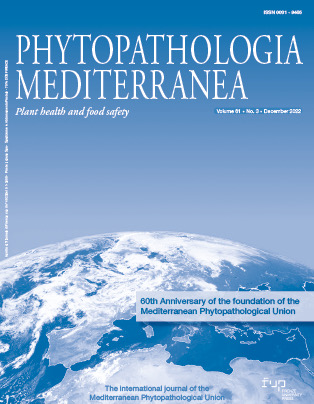Published 2023-01-13
Keywords
- Food losses,
- microorganism contamination,
- mycotoxins,
- LAMP
How to Cite
Abstract
Postharvest losses, which occur between harvest and consumption of agricultural commodities, are major causes of food waste. Minimizing food loss helps provide nutritious food for animals and humans, and alleviate adverse environmental effects on food production. These losses are often related to the presence of postharvest pathogens, including fungi and bacteria, which typically start by infecting crops in the field as well as during postharvest chain. Control of these pathogens relies on development of tools that ensure their early and accurate detection. Among these is loop-mediated isothermal amplification (LAMP), a molecular method for pathogen detection. LAMP characteristics of rapidity, specificity and simplicity have encouraged development of a number of LAMP assays for detection of postharvest pathogens. Each LAMP assay allows to detect a specific genetic region of the target microorganism, which can be directly related to mycotoxin production, fungicide resistance and phytotoxicity. The LAMP amplicons are rapidly visualized, either at a specific timepoint, or in real-time by taking measurements throughout reaction, thereby necessitating less sophisticated facilities than those needed for PCR assays. In addition, many studies have developed simple protocols for the direct detection of pathogens on fresh produce. This paper explains the LAMP reaction, and its importance for postharvest detection of fungi and bacteria. Previous studies that have developed LAMP assays are also discussed.







